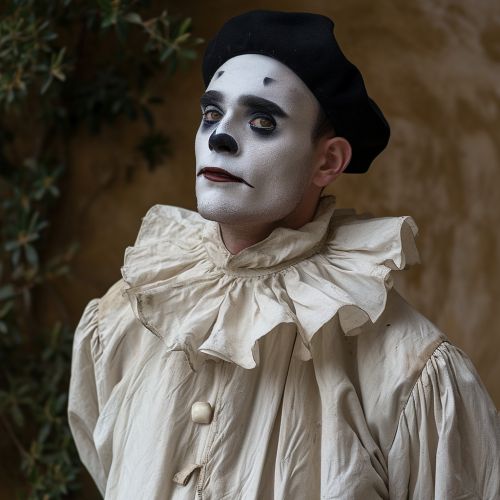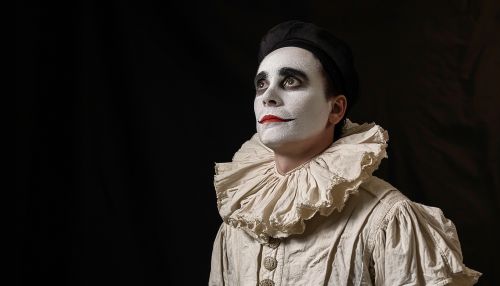Pierrot
Origins and Development
Pierrot is a stock character that originated from the late seventeenth-century Italian troupe of players performing in Paris, known as the Commedia dell'Arte. The character, initially a type of fool or clown, has undergone significant transformation over centuries, evolving into a complex figure of melancholy, naivety, and innocence.


The character Pierrot was first introduced by Giuseppe Giratoni in his troupe, the Comédie-Italienne, in 1665. The character was named 'Pedrolino' in Italian and was later renamed 'Pierrot' in French. Pierrot was initially depicted as a simpleminded and honest character, often the victim of pranks by Harlequin. He was characterized by his white face paint, loose white blouse and pants, and a black skullcap.
Characterization and Symbolism
Over time, Pierrot's character evolved from a foolish clown to a representative figure of the human condition. He is often portrayed as a moonstruck dreamer, an innocent fool, and a hopeless romantic. His unrequited love for Columbine, another character from the Commedia dell'Arte, is a recurring theme in many adaptations.
Pierrot's white costume and makeup symbolize his innocence and naivety, while his black skullcap represents his worldly experiences. His character is often used to explore themes of love, loss, and loneliness. Pierrot's enduring appeal lies in his relatability and the universality of his experiences.
Pierrot in Literature and Art
Pierrot has been a popular figure in literature and art, especially during the 19th and early 20th centuries. He has been portrayed in various forms, from a tragic figure in the works of French poet Jean Cocteau to a symbol of the alienated artist in the paintings of Pablo Picasso.
In literature, Pierrot often serves as a metaphor for the alienated artist or the misunderstood genius. His character is used to explore themes of creativity, isolation, and the struggle for understanding and acceptance.
In art, Pierrot is often depicted in a state of melancholy or introspection, reflecting the artist's inner turmoil. His image has been used to represent the isolation and alienation of the modern individual.
Pierrot in Theatre and Cinema
Pierrot's character has been widely adapted in theatre and cinema. His tragicomic persona and the themes associated with his character have made him a popular figure in dramatic performances.
In theatre, Pierrot is often portrayed as a tragic figure, his unrequited love for Columbine serving as a metaphor for unfulfilled desires and dreams. His character is often used to explore themes of love, loss, and longing.
In cinema, Pierrot has been portrayed in various ways, from a tragic hero to a comic relief. His character has been used to explore themes of innocence, love, and the human condition.
Influence and Legacy
Pierrot's character has had a significant influence on popular culture, inspiring various adaptations and interpretations. His enduring appeal lies in his relatability and the universality of his experiences.
Pierrot's character has influenced various art forms, from literature and art to theatre and cinema. His image has been used to represent the isolation and alienation of the modern individual, making him a symbol of the human condition.
